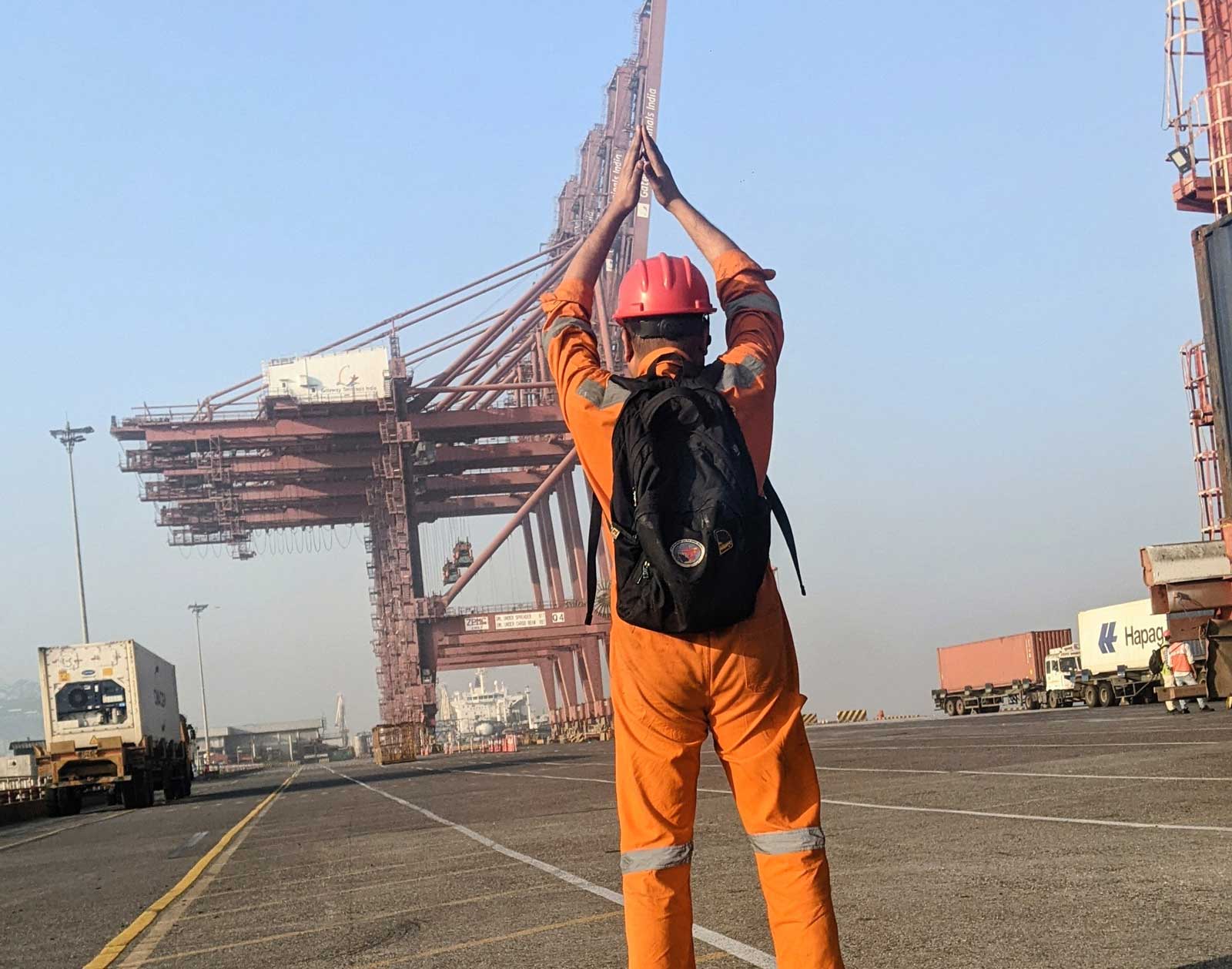
Safe to say goodbye : APM Terminals Mumbai
MUMBAI : We’re investing in the future, while honouring the past. At APM Terminals Mumbai, the equipment we use is respected – even revered – by the people that commission it, use it and, when the time comes, say farewell to it.
Our Mumbai terminal – also known as Gateway Terminals India (GTI) – is continuing its major Fit for Future project, which will see the terminal increase capacity by 10%, to 2.18 million TEUs (Twenty Foot Equivalent Unit). Massive infrastructure upgrades will mean the terminal – India’s busiest – will have the reach to handle the largest vessels that call Nhava Sheva’s Jawaharlal Nehru port with the arrival of 23-container-outreach cranes.
Safe to say
But while we’re focused on the future, ‘bringing our hearts and brains to the game’ means that our people care enough about their work to also acknowledge significant achievements – and attachments – formed in the past.
That’s why, when five quay cranes at GTI were due for decommission, the workforce turned out in droves to say farewell to the infrastructure that has served the company, and our customers well.
End of an era
Sunay Mukerjee, Chief Operating Officer, APM Terminals Mumbai, said the decommissioning was “an emotional moment for the frontline colleagues at GTI.”
In a message to APM Terminals global organisation he wrote: “This morning, Berth 1 at GTI closed for operations as we start the massive Fit for Future project.” Offline, he confessed that there were few dry eyes on the dock as the Ship-to-Shore Cranes 1-5 performed their final moves.
“In Indian tradition, equipment and tools are considered very sacred. Workers revere the machines which bring success and prosperity in professional life,” he said.
Saying goodbye to the cranes was akin to “saying goodbye to a retiring colleague who has been with us throughout our journey to excellence,” said Mukerjee.
Safe to the core
The transformation at APM Terminals Mumbai will accelerate the terminal’s ability to accommodate larger vessels and bring economies of scale.
In addition, as Mukerjee points out, “We are making our terminal safer, better, and bigger. We can achieve this in large part because of the dedication of our people, who demonstrate an exemplary work culture to serve our customers and to keep Safety at the core of our operations.”
Remarkable achievement
This safety culture is demonstrated by the 500, and counting, incident-free days chalked up at the terminal project site.
“This is a remarkable feat considering the nature of the work and dealing with the large equipment and machine at the site,” says Mukerjee. “This is the result of our work culture of taking ownership, following safety protocols & procedures, teamwork, and commitment under the able support of the management.”
The terminal now embarks on the most critical part of its Fit for Future project with ongoing dismantling of existing infrastructure and the arrival of new cranes, In the transition periods, expected to take six months, APMM Berth 1 will remain closed for vessel operations.
Completion, on schedule for early September, will see the terminal not only increase capability to handle bigger vessels, but also increase efficiency allowing us to turnaround our shipping line vessels faster, creating value for end customers.
